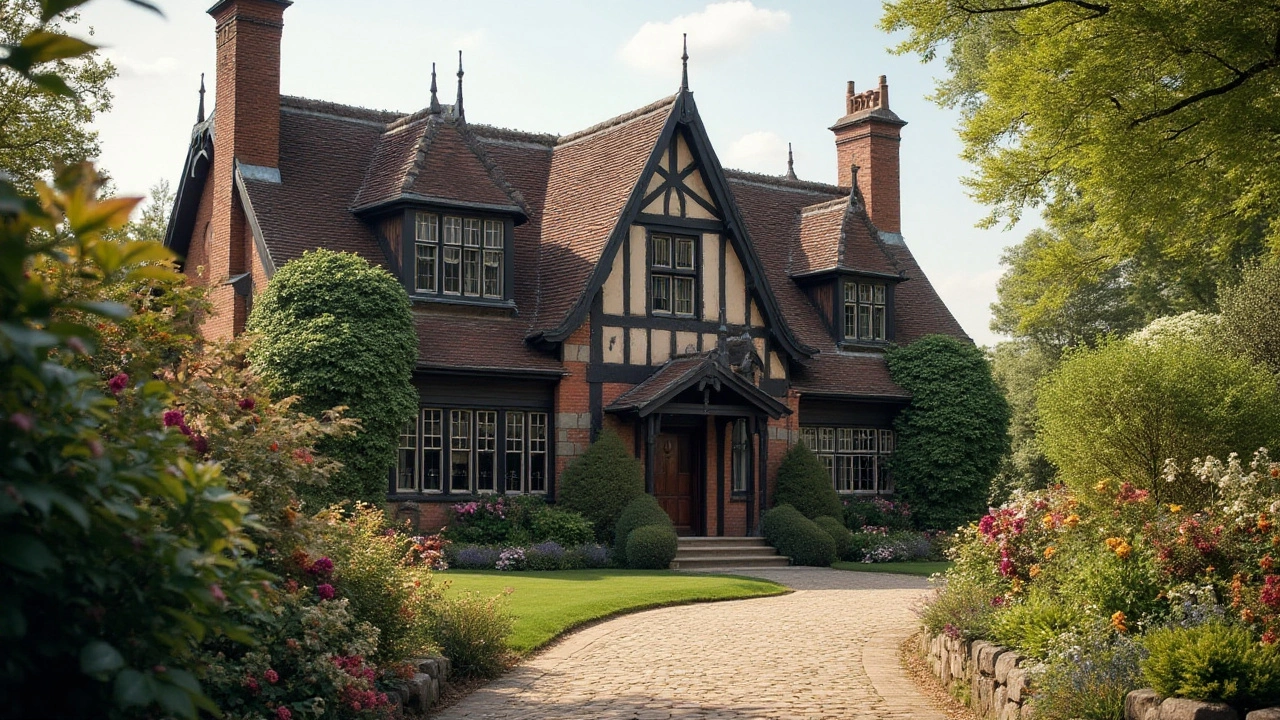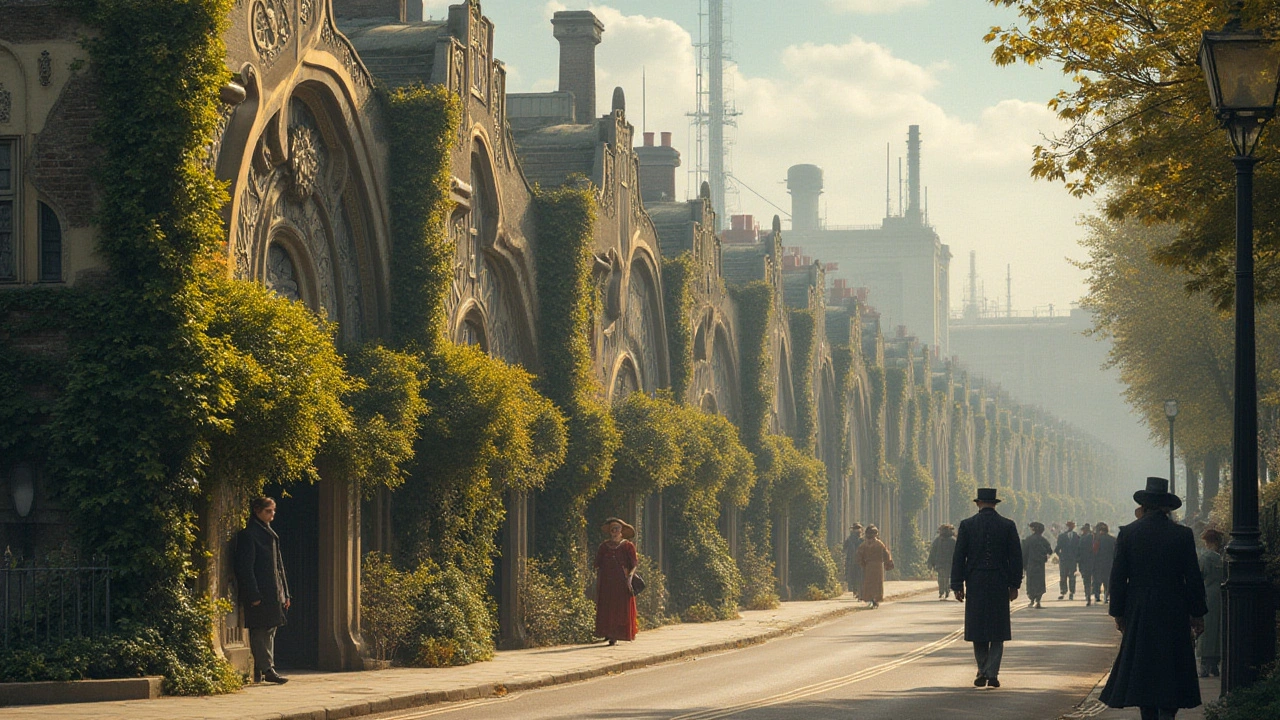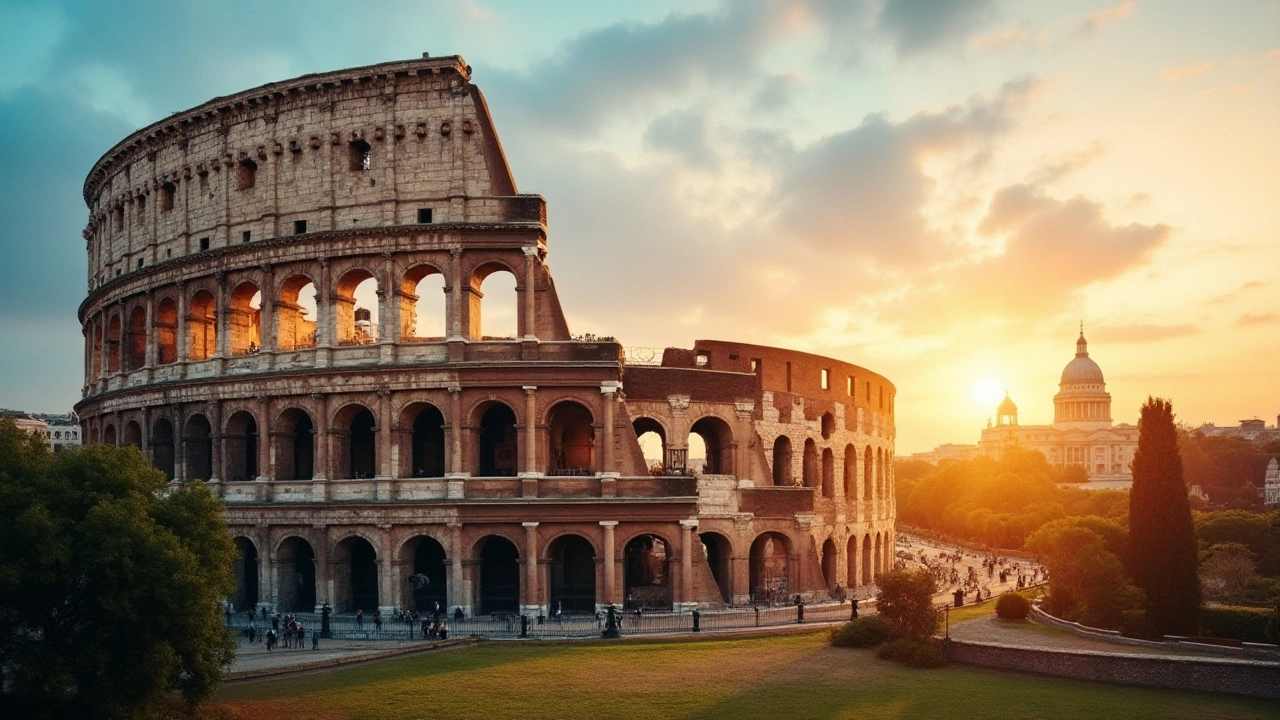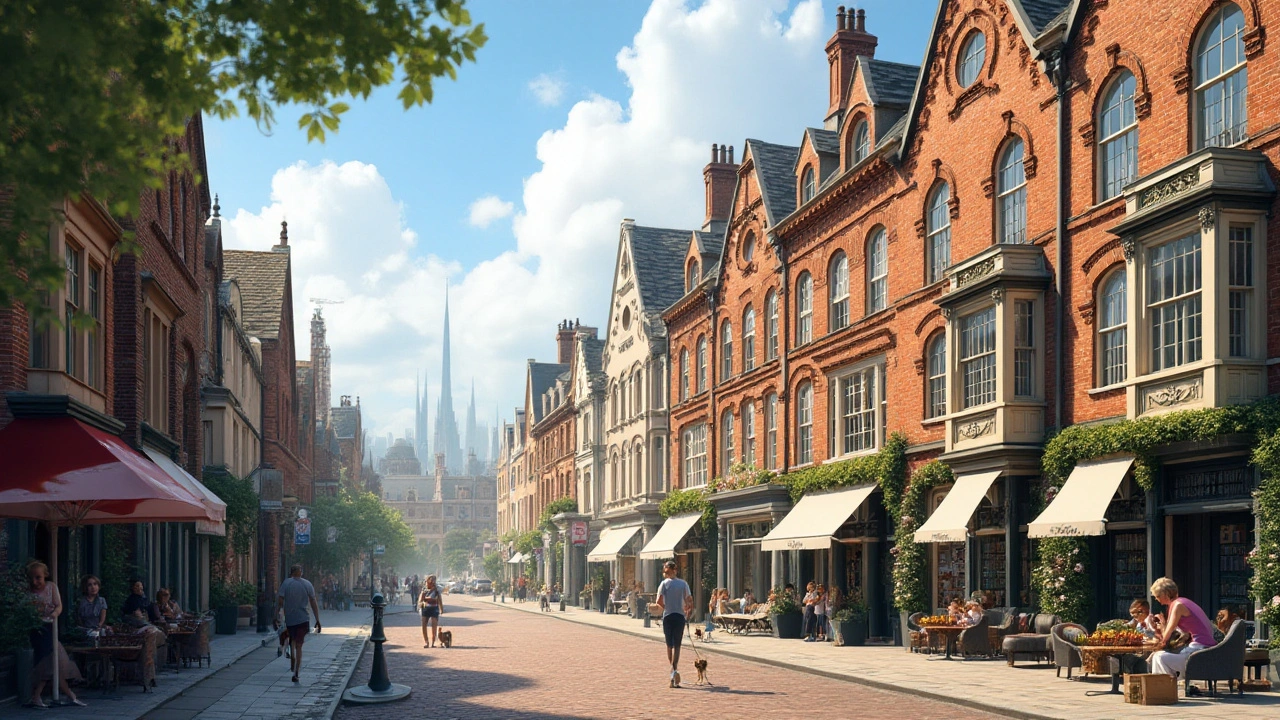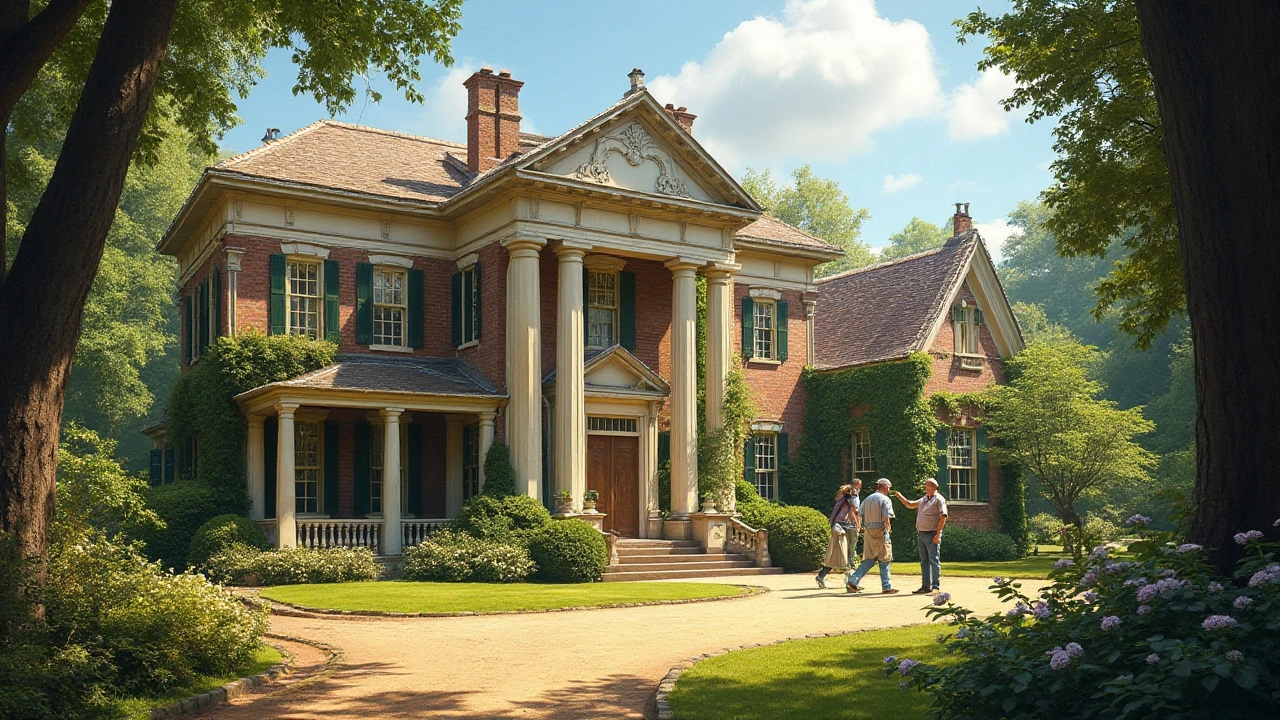Dutch Colonial Revival architecture brings timeless elegance and practicality to homes, characterized by its distinct gambrel roofs, symmetrical facades, and charming dormers. Emerging in the early 20th century, this style is a nod to the original Dutch Colonial homes of the 17th and 18th centuries. It became popular in the United States, especially in residential neighborhoods, for its unique blend of tradition and modern-day comfort. Intricate woodwork, substantial use of brick and stone, and ample light are some key features that enthusiasts and designers cherish today.
December 2024 Archive — Key Architectural Styles and Practical Takeaways
Did you know December 2024 on Architectural Artistry Chambers focused on how old ideas still shape what we build today? This month brings practical looks at historic styles, their design details, and how to preserve them. If you want design cues, restoration tips, or quick history that helps with real projects, you are in the right spot.
What was published and why it matters
We published eight posts covering a wide range: Dutch Colonial Revival (two takes), Art Nouveau, Roman architecture, Postmodern, Federal, Italianate, and a piece on conserving colonial buildings. Each post is short, focused, and meant to help you spot key features, use historical details in modern work, or plan a preservation effort.
Take Dutch Colonial Revival: one post explains the classic gambrel roof, dormers, and materials that give these homes charm and function. The second post looks at cultural meaning — why Americans returned to these forms and how that history can guide sympathetic renovations. If you are fixing up a period home, those two pieces show what to keep and what to adapt.
Art Nouveau gets a tight, useful treatment: expect clear examples of flowing lines, organic ornament, and material choices that served both art and structure. The article helps designers borrow Art Nouveau details without creating pastiche — use selective motifs, custom metalwork, or tile patterns to hint at the style while staying contemporary.
Roman architecture is less about decoration and more about engineering. The December post highlights arches, vaults, and aqueducts and explains practical lessons: how load distribution, vaulting, and durable materials from antiquity still inform structural choices and landscape design today.
Design tips, preservation advice, and quick reads
Postmodern and Italianate pieces offer concrete ideas you can apply now. Postmodernism is treated as a lesson in bold contrast: mix scales, color, and reference so a building feels intentional, not chaotic. The Italianate article shows how brackets, cornices, and arched windows can be reinterpreted in modern facades or interiors for a warm, classic touch.
The Federal architecture post lists subtle cues — symmetry, refined ornament, and classical proportions — that help when restoring period details or designing new work with a nod to early American aesthetics.
Finally, the colonial conservation article is hands-on: it explains restoration techniques, material matching, and ways to involve communities in preservation. If you are planning a conservation project, start with a condition survey, prioritize structural fixes, and use local craftsmen so repairs match original methods.
Want next steps? Read the posts that match your project: pick the stylistic guide for visual choices, the Roman or Federal piece for structural insight, and the conservation guide when you need to keep authenticity intact. Each article is short and practical — no heavy theory, just usable ideas.
Curious about something specific from these posts? Ask for a quick summary, preservation checklist, or design sketch ideas inspired by any style covered this month.
Art Nouveau architecture goes beyond mere decorative embellishment, embodying a revolutionary movement that transformed both aesthetic principles and architectural practices in the late 19th and early 20th centuries. This captivating style emerged as a response to industrialization, emphasizing organic shapes and detailed ornamentation. Each building is a celebration of craftsmanship, with unique elements and materials that merge functionality with artistic flair. This article delves into the history, key features, notable structures, and enduring impact of Art Nouveau, offering a deeper understanding of this iconic design movement.
Immerse yourself in the grandeur of Roman architecture as we explore its lasting influence on modern design. This article delves into the architectural innovations and construction techniques that have stood the test of time. Discover fascinating elements of Roman design such as the use of arches, vaults, and aqueducts. Learn about key structures that exemplify Roman architectural excellence and gain insights into how these ancient techniques continue to inspire today's architects. By understanding Roman architecture, one can appreciate the blend of creativity and engineering that shaped an era.
Postmodern architecture stands as a testament to creativity and nonconformity in design. Its origins trace back to the late 20th century as a response to the rigid norms of modernism. Embracing eclectic styles, bright colors, and historical references, postmodernism breathed new life into urban landscapes. This article delves into its defining features, cultural impact, and celebrated structures across the globe. Discover how postmodern architecture continues to challenge convention and inspire new generations of architects.
Federal architecture, a style that has left a defining mark on the landscape of early America, combines elegance and simplicity. It flourished from the late 18th to mid-19th centuries and reflects the ideals of the young Republic. This article delves into the distinct features, influences, and prominent examples of this architectural style that echo the nation's rich history. Readers will discover tips for identifying Federal structures and learn about the iconic buildings that showcase this unique aesthetic.
Italianate architecture, which flourished during the 19th century, is experiencing a revival in contemporary design. Known for its elegant features such as brackets, cornices, and arched windows, this style is being reimagined in modern architecture. The resurgence blends historic charm with modern functionality, offering both designers and homeowners opportunities for creating stunning spaces. Understanding the elements and historical context of Italianate architecture can inspire new construction and renovations alike.
Colonial architecture stands as a testament to a significant period in history, offering a glimpse into the profound craftsmanship and cultural influences of bygone eras. Efforts to conserve these remarkable structures are vital to preserving their architectural integrity and historical value. This article delves into the nuances of colonial architecture, highlighting effective conservation strategies, restoration techniques, and the importance of community involvement in safeguarding these relics. Through thoughtful discourse, it pays homage to the magnificence of colonial design, offering insights into sustainable methods to ensure their endurance for future generations.
Dutch Colonial Revival architecture holds a unique place in history, fusing nostalgic charm with practical design. Emerging in the late 19th century, this style draws inspiration from the early Dutch settlers' homes in America. Known for its distinctive gambrel roofs and symmetrical facades, the Revival movement reflects an appreciation for the past while adapting to modern needs. This exploration uncovers the enduring influence and cultural significance of this architectural style.

